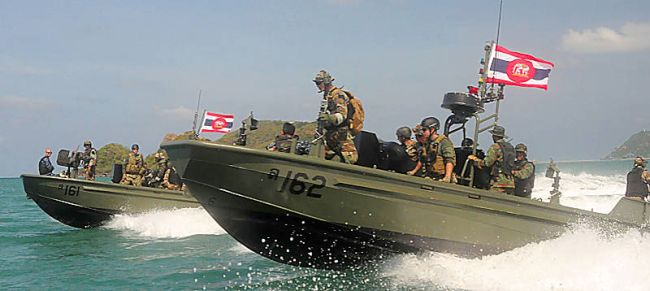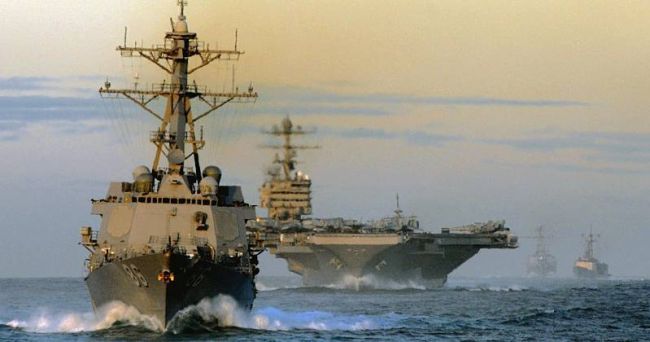MANGILAO, Guam„ July 27, 2010 — The Defense Department is committed to protecting Guam’s infrastructure and resources, and will adjust the pace of incoming U.S. troops to match the island’s ability to accommodate them, the deputy defense secretary said here today.
“I will not hesitate to make adjustments as the enterprise unfolds to protect the island’s infrastructure, services and resources,” William J. Lynn III told an audience of local officials and community leaders while taking part in the University of Guam’s Presidential Lecture Series.
Lynn made his first visit to Guam today to get a firsthand look at the island’s facilities and to speak with government leaders and residents about the upcoming troop realignment, as well as to underscore Guam’s importance to the stability and security of the Asia-Pacific region.
About 8,500 Marines and some 9,000 family members are slated to move to this U.S. territory from Okinawa in accordance with a 2006 agreement between the United States and Japan. The same agreement also calls for a realignment of Marines to a new location on Okinawa.
“Our realignment of forces here is the key to maintaining an effective presence [in the region],” Lynn explained. “We need the right mix of forces to address the increasing set of security missions across the region.”
The realignment of troops here will more than double the U.S. military’s presence on Guam, which now stands at about 7,500 U.S. servicemembers and more than 8,400 family members. This projected increase has raised concerns among the people of Guam in regard to the environmental and cultural impacts of an increased military presence.
However, with the release of the final environmental impact statement last week, the United States has reached a “milestone” in its efforts to assess the possible environmental consequences of the build-up, Lynn said. This statement lays out the effects of an increased military presence and outlines measures that will help the military and people of Guam create a sustainable future, he added.
U.S. Navy officials compiled the statement in cooperation with many agencies across the government and Guam, Lynn said, and also is based on the input of those most affected — the leaders and residents of Guam. During the process, officials received and evaluated more than 10,000 public comments, he said.
Officials took a “hard look” at air quality, water, waste water, power, roads, the port and underlying socio-economic issues, Lynn said, and also conducted additional studies on sustainability, natural resources and wetlands.
The statement identifies about $1 billion of funding needed for improvements to Guam’s utilities, port and roads, the deputy secretary said.
“We are already making good on our pledge to improve Guam’s infrastructure,” Lynn noted. The Japanese government will finance $740 million of infrastructure projects, he explained, and President Barack Obama has requested congressional authority for the Defense Department to fund an upgrade to Guam’s only commercial port. “Together with matching funds from the Department of Agriculture, we will be making a $100 million investment in the port,” he said.
Other funds will be funneled into Guam’s roads, and in cooperation with the island, the nation is laying the groundwork for improvements to utilities, schools, health care, public safety and other needs. To do so, the nation will “draw on Guam’s expertise to the fullest” with new opportunities for Guam’s businesses and work force.
“Guam’s work force will be tapped into first before foreign workers are brought to Guam,” Lynn vowed, noting that the need for their expertise will extend far into the future with base jobs and the provision of goods and services.
“A whole new economy will emerge from the transformation of forces we are undertaking on Guam – an economy that will spur job growth and demands for highly skilled labor for decades to come,” he said.
The aim also is to incorporate “green technology” to meet the increased resource demands, Lynn said.
“Our collective investment in wind, solar, hydroelectric and wave-generated power will make Guam an environmental leader among Pacific islands,” he predicted.
Throughout this process, Lynn said, the Defense Department remains committed to protecting Guam’s culture and the spirit of its community.
“Protecting Guam’s culture for future generations is something we can only do in partnership with you,” he told the audience.
Lynn also pledged to ensure Guam’s infrastructure is prepared for the military growth.
“Guam is home to 17,000 of our fellow U.S. citizens; we have an obligation to ensure that the realignment improves, rather than detracts from their lives,” he said. “If we follow this principal, the build-up can serve as a tremendous catalyst for Guam’s future development.”
Still, there are challenges to overcome, and much work remains to be done, Lynn acknowledged.
One of the sources of concern for some of Guam’s residents has centered on the location of a Marine firing range in Pagat, a culturally significant site for Guam.
A small-arms training range is vital to the realignment of Marines here, and the environmental impact statement has identified Pagat as the preferred location, Lynn said.
Still, “There are important cultural equities here, and we need to protect, in this case in particular, an important site to the Chamorro culture in a way that’s acceptable to the people,” he said in a media roundtable today. “I think it’s still possible to find a way to do that.”
While challenges will arise, Lynn said he feels this realignment also offers a tremendous opportunity, particularly for Guam’s residents. But “to realize the realignment’s potential, U.S. officials and the people of Guam must work side by side, every step of the way,” he said. “We must keep the lines of communication open and we must make decisions together, in full partnership with the communities who will be most affected.
“This will not happen overnight, but the men and women of the military who will make Guam their home share with their fellow citizens of Guam, the desire to get this right.”
Source:
U.S. Department of Defense
Office of the Assistant Secretary of Defense (Public Affairs)

 von
von 
